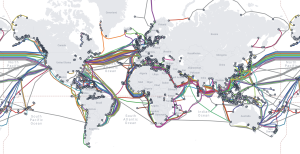The Future of Satellites: Revolutionizing Global Connectivity and Exploration
The future of satellites is rapidly evolving, driven by advancements in technology and increasing demand for global connectivity and exploration. Future of satellites is an exciting and dynamic field, with new developments and innovations emerging continuously. Satellites have been a crucial part of modern life, enabling global communication, navigation, weather forecasting, and Earth observation. As technology continues to advance, satellites are becoming more sophisticated, enabling new applications and services that transform industries and improve our daily lives.
Satellite communications play a vital role in connecting remote and underserved communities, providing internet access, and supporting emergency response efforts. The development of new satellite constellations, such as Low Earth Orbit (LEO) satellites, is expected to further enhance global connectivity, offering faster and more reliable internet services. Additionally, satellites are being used for Earth observation, monitoring climate change, and tracking natural disasters, providing valuable insights for scientists, policymakers, and emergency responders.
Advancements in Satellite Technology
Recent advancements in satellite technology have led to the development of smaller, more efficient, and cost-effective satellites. The use of 3D printing, advanced materials, and modular designs has reduced the size and weight of satellites, making them more affordable and easier to launch. Furthermore, the adoption of electric propulsion systems and advanced power sources has increased the lifespan and maneuverability of satellites, enabling them to operate for longer periods and perform more complex tasks.
The integration of artificial intelligence (AI) and machine learning (ML) into satellite systems is also transforming the industry. AI-powered satellites can process vast amounts of data in real-time, enabling applications such as predictive maintenance, anomaly detection, and autonomous operation. Moreover, the use of ML algorithms can improve the accuracy of satellite-based Earth observation, allowing for more precise monitoring of environmental changes and natural disasters.
Applications and Services
The future of satellites holds immense potential for various industries and applications. Satellite-based services, such as satellite internet, navigation, and remote sensing, are becoming increasingly important for global connectivity, exploration, and economic development. The use of satellites for future of satellites applications, such as space tourism, satellite-based solar power, and asteroid mining, is also being explored.
Satellites are also playing a critical role in supporting the development of the Internet of Things (IoT), enabling the connection of devices and sensors in remote and hard-to-reach areas. The use of satellites for IoT applications, such as smart agriculture, smart cities, and industrial automation, is expected to drive growth and innovation in various sectors.
Conclusion
In conclusion, the future of satellites is exciting and dynamic, with new developments and innovations emerging continuously. As technology continues to advance, satellites will become increasingly sophisticated, enabling new applications and services that transform industries and improve our daily lives. The potential of satellites to revolutionize global connectivity, exploration, and various industries is immense, and it is essential to continue investing in research and development to unlock the full potential of satellite technology.


